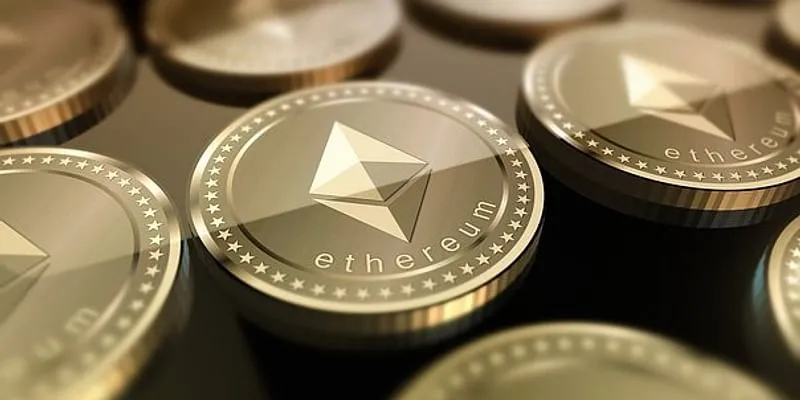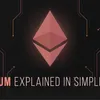Ethereum 2.0: All you need to know about Proof of Stake, Beacon Chain, Sharding
Ethereum 2.0 refers to a set of upgrades currently underway on the Ethereum blockchain. The first one happened on October 27, 2021. Here’s all you need to know about its significance.
Since its launch in 2015, Ethereum has grown into one of the most prominent blockchains, with its native token Ether (ETH) becoming the second largest cryptocurrency by market cap (over $487 billion).
Now, the much-awaited Ethereum 2.0 upgrade is finally underway. The first major upgrade on Ethereum 2.0 — the multi-phase transition of Ethereum into a more scalable, energy efficient blockchain — happened on October 27, 2021.
Known as the Altair Beacon Chain upgrade, the move prepares developers and client teams for the upcoming ‘Merge’ where Ethereum will transform from a Proof-of-Work (Pow) blockchain to a Proof-of-Stake (PoS) network.
So, what exactly is Ethereum 2.0, why is it relevant, and why is the move towards a PoS blockchain important for the global blockchain community?
Here’s all you need to know.
Ethereum 2.0 explained
Ethereum 2.0 is a collective term for a set of upgrades that are currently underway on the Ethereum blockchain. These upgrades aim to address scalability challenges, high gas fees (transaction fees), and congestion in Ethereum’s existing PoW blockchain.
In simple terms, the upgrades will enable Ethereum to process more transactions per second, use less energy, and become more secure.
Ethereum 2.0 is launching in several phases. The first phase — the Beacon Chain — went live in December 2020.
The Beacon Chain is a network that introduces staking (locking of crypto by the network’s nodes) to the Ethereum blockchain. Staking is a critical component of building and running a PoS consensus mechanism.
You can refer to this article to understand more about Proof of Work and Proof of Stake, and the differences between the two.
At present, the Beacon Chain is separate from the Ethereum Mainnet. The Merge, expected sometime in the first half of 2022, will combine the Beacon Chain with the Ethereum Mainnet.
The final phase of Ethereum 2.0 involves sharding, which is the process of dividing the network into subsets of nodes to improve efficiency. Instead of executing all transactions on a singular blockchain, sharding allows Ethereum to spread operations across several new chains.
Shard chains aren’t expected until at least 2022.
To understand more about the significance of these upgrades, let’s first look at the origins of Ethereum and its existing challenges.

Origins of Ethereum
In 2013, a young Canadian-Russian programmer named Vitalik Buterin came up with a way to take the Bitcoin idea to the next level and apply blockchain tech to multiple types of applications.
He published a blog post titled ‘Ethereum: The Ultimate Smart Contract and Decentralized Application Platform’, which described Ethereum as a “Turing-complete blockchain – a decentralised computer that, given enough time and resources, could run any application.”
Vitalik believed that multiple types of apps could be deployed on blockchain, and wanted to build Ethereum to explore the use cases of blockchain beyond the limitations of Bitcoin.
He launched Ethereum as a platform for not only performing financial transactions but also allowing users a great degree of programmability. It allowed developers the ability to experiment with code and build decentralised applications (DApps) on the Ethereum blockchain.
Ethereum’s USP is smart contracts — pieces of code that self-execute when certain conditions are met.
They are essentially contracts that enforce agreements between parties. In the case of DApps, smart contracts are coded by developers so they can be read by the Ethereum Virtual Machine (EVM).
The EVM is a runtime environment for every smart contract on Ethereum, and enables the execution of code as intended. Consensus is maintained across the Ethereum blockchain since every node runs on the EVM.
Current challenges for Ethereum
To update validated transactions across nodes, mining is done using an energy-intensive PoW system similar to that of Bitcoin. PoW is soon going to be dropped in favour of PoS.
On the Ethereum network, smart contracts require certain amounts of fees to successfully run. These fees are known as ‘gas’ or ‘gas fees’. In essence, gas fees are paid for in ETH by users who want to transact on the Ethereum network.
More complex contracts require more gas fees than simple ones. And if there isn’t enough gas, a smart contract gets halted. If there is congestion in the Ethereum network and several users are trying to transact concurrently, the average gas price rises.
High gas fees are considered one of the primary challenges of using Ethereum. Users have been known to pay several hundred dollars in gas fees for transactions with small ticket-sizes at times when the network was more congested than usual.
And like Bitcoin, Ethereum has a scalability problem. It usually maxes out at processing up to 10 transactions per second (TPS), which is quite low for a platform hosting DApps seeking to attract millions of global users.
Addressing the above limitations and challenges is Ethereum 2.0, which seeks to improve Ethereum’s overall performance. There are also a range of Ethereum Layer 2 scaling solutions, such as Polygon, that allow users to perform cheaper transactions off-chain at a faster pace.
What about Ethereum killers?
Ethereum 2.0 is considered a threat to Ethereum’s competitors, which are often dubbed as ‘Ethereum killers’. These include the likes of Solana (SOL), Cardano (ADA), Avalanche (AVAX), and more.
Ethereum killers are generally third gen, newer blockchains with smart contact functionality that began life using PoS consensus systems.
But with Ethereum upgrading its network to become more efficient and scalable, it remains to be seen how Ethereum killers will compete as they vie to become the dominant smart contract platform.
Perhaps, there could emerge fourth generation blockchains that perform even better than Ethereum 2.0 and Ethereum killers, in which case the existing smart contract-enabled blockchains will have to be quicker to react.
Edited by Saheli Sen Gupta








